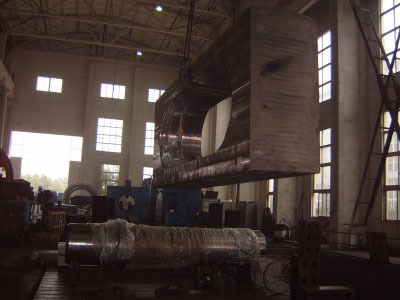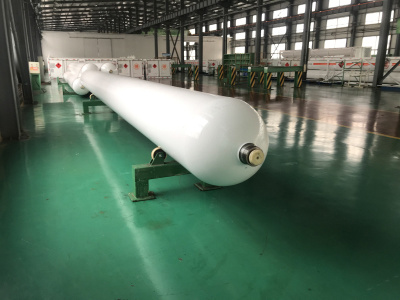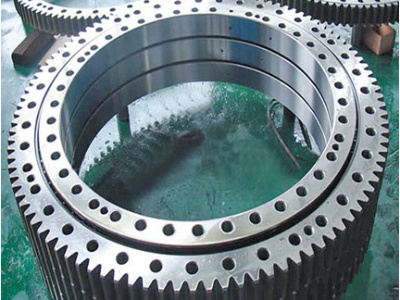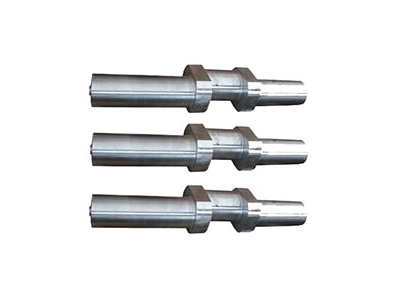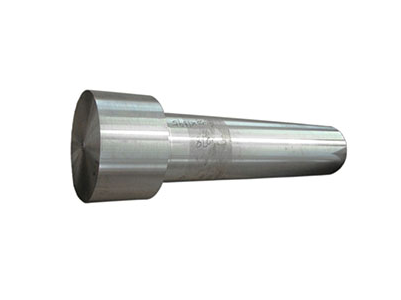Understanding the Importance of Medium and Big Size Forged Parts in Machinery Manufacturing
Release Time:
Jul 17,2025
Understanding the Importance of Medium and Big Size Forged Parts in Machinery Manufacturing Manufacturing machinery involves intricate processes that require reliability, strength, and precise engineering. Among these components, **medium and big size forged parts** stand out as crucial elements that significantly impact overall machinery performance. In this article, we will delve into the import

Understanding the Importance of Medium and Big Size Forged Parts in Machinery Manufacturing
Manufacturing machinery involves intricate processes that require reliability, strength, and precise engineering. Among these components, **medium and big size forged parts** stand out as crucial elements that significantly impact overall machinery performance. In this article, we will delve into the importance of these forged parts, their advantages, production techniques, and the diverse applications across various industries.
Table of Contents
- 1. Introduction to Forged Parts
- 2. Why Medium and Big Size Forged Parts Are Essential
- 3. Benefits of Forged Parts in Machinery Manufacturing
- 4. The Production Process of Forged Parts
- 5. Applications of Medium and Big Size Forged Parts
- 6. Material Selection for Forged Parts
- 7. Challenges in Manufacturing Forged Parts
- 8. Future Trends in Forging Technology
- 9. Conclusion
- 10. FAQs
1. Introduction to Forged Parts
Forged parts are created through a process that involves shaping metal using localized compressive forces. This method enhances the internal structure of the metal, resulting in exceptional strength and durability. **Medium and big size forged parts** refer to components that are larger in scale, typically weighing several kilograms and made to withstand heavy loads and high-stress applications. These parts are essential for various sectors, including automotive, aerospace, construction, and industrial machinery.
2. Why Medium and Big Size Forged Parts Are Essential
The significance of medium and large forged parts lies in their ability to endure extreme conditions while maintaining structural integrity. These components support the functionality of machinery, ensuring smooth operations and minimal downtime. **Key reasons** for their essential nature include:
- **Strength and Durability**: Forged parts exhibit superior strength compared to cast or machined components. They are less likely to fail under load, making them ideal for critical applications.
- **Improved Fatigue Resistance**: The grain structure of forged materials is refined during the forging process, enhancing their resistance to fatigue and wear.
- **Weight Reduction**: Forged parts can be crafted to be lighter without compromising strength, contributing to overall equipment efficiency.
3. Benefits of Forged Parts in Machinery Manufacturing
Utilizing medium and big size forged parts in machinery manufacturing offers numerous advantages, which include:
3.1 Enhanced Performance
Forged components often outperform their counterparts due to their ability to withstand greater stress and higher temperatures. This leads to improved machinery performance and lifespan.
3.2 Cost Efficiency
Although the initial manufacturing costs may be higher, the longevity and reduced maintenance requirements of forged parts result in significant savings over time.
3.3 Customization
Manufacturers can tailor forged parts to meet specific requirements, providing flexibility in design and application. This customization helps in optimizing machine performance for various industries.
4. The Production Process of Forged Parts
The production of medium and big size forged parts involves several stages, ensuring precise dimensions and optimal properties. The following steps outline the general forging process:
4.1 Material Selection
Choosing the right metal is crucial, as it influences the final properties of the forged part. Common materials include carbon steel, alloy steel, and titanium.
4.2 Heating
The chosen metal is heated to a temperature where it becomes malleable. This step is vital for ensuring that the metal can be shaped without cracking.
4.3 Forging
The heated metal is then forged using either open-die or closed-die methods. Open-die forging allows for larger and more complex shapes, while closed-die forging provides higher precision for intricate designs.
4.4 Cooling and Finishing
After forging, the parts must cool down, often through controlled cooling processes to relieve internal stresses. Subsequent finishing processes, such as machining and surface treatment, enhance the final quality of the parts.
5. Applications of Medium and Big Size Forged Parts
The applications of medium and large size forged parts are vast and varied. Below are key industries where these components play a vital role:
5.1 Automotive Industry
In the automotive sector, forged parts are used in engine components, drive shafts, and suspension systems. Their strength and durability are essential for vehicle safety and performance.
5.2 Aerospace Sector
The aerospace industry relies on forged parts for critical components such as landing gear and turbine disks. The need for lightweight but strong materials makes forging a preferred manufacturing method.
5.3 Construction Machinery
Heavy machinery used in construction often incorporates forged parts due to the high stresses they encounter. Equipment such as cranes and excavators depend on these robust components for reliability.
5.4 Industrial Equipment
Forged parts are integral in manufacturing pumps, valves, and heavy-duty machinery, where performance and longevity are paramount.
6. Material Selection for Forged Parts
Selecting the appropriate material for forged parts is critical to achieving the desired mechanical properties. Factors to consider include:
- **Load Requirements**: Different applications have varying load capacities; thus, materials must be chosen based on their strength and durability.
- **Environmental Conditions**: Components exposed to harsh environments may require corrosion-resistant materials.
- **Cost Considerations**: The chosen material should align with budget constraints while meeting performance requirements.
7. Challenges in Manufacturing Forged Parts
Despite the advantages of forged parts, several challenges exist in their manufacturing:
7.1 High Initial Costs
The investment required for forging equipment and tooling can be substantial, which may deter some manufacturers.
7.2 Complexity in Design
Creating complex shapes may require advanced forging techniques, increasing the time and costs involved in production.
7.3 Quality Control
Maintaining consistent quality across large batches can be challenging, necessitating rigorous testing and inspection processes.
8. Future Trends in Forging Technology
As technology evolves, the forging industry is poised for advancements that may revolutionize production methods:
8.1 Automation and Robotics
The integration of automation and robotics in forging processes can enhance efficiency and reduce labor costs, leading to higher productivity.
8.2 Advanced Materials
Research into new materials and alloys may yield even stronger and lighter forged components, opening up new possibilities for applications.
8.3 Sustainability Practices
The forging industry is increasingly focusing on sustainable practices, including energy-efficient processes and the use of recycled materials.
9. Conclusion
Medium and big size forged parts play a pivotal role in machinery manufacturing, providing strength, durability, and performance that are essential for various applications. Understanding the benefits, production processes, and materials involved in forging can empower manufacturers to make informed decisions that enhance their operations. As technology progresses, the forging industry will continue to evolve, presenting opportunities for innovation and growth.
10. FAQs
10.1 What are forged parts?
Forged parts are metal components shaped through compressive forces, resulting in enhanced strength and durability.
10.2 How do forged parts differ from cast parts?
Forged parts are generally stronger and more durable than cast parts due to the refined grain structure achieved during the forging process.
10.3 What industries use medium and big size forged parts?
Industries such as automotive, aerospace, construction, and industrial machinery widely use medium and big size forged parts.
10.4 What materials are commonly used for forging?
Common materials for forging include carbon steel, alloy steel, and titanium, selected based on performance requirements.
10.5 What are the benefits of using forged parts in manufacturing?
The benefits include enhanced performance, cost efficiency, and the ability to customize components for specific applications.
多行文本内容元素
富文本内容绑定数据后可解析HTML语言内容
Key words:
News Hotspot





